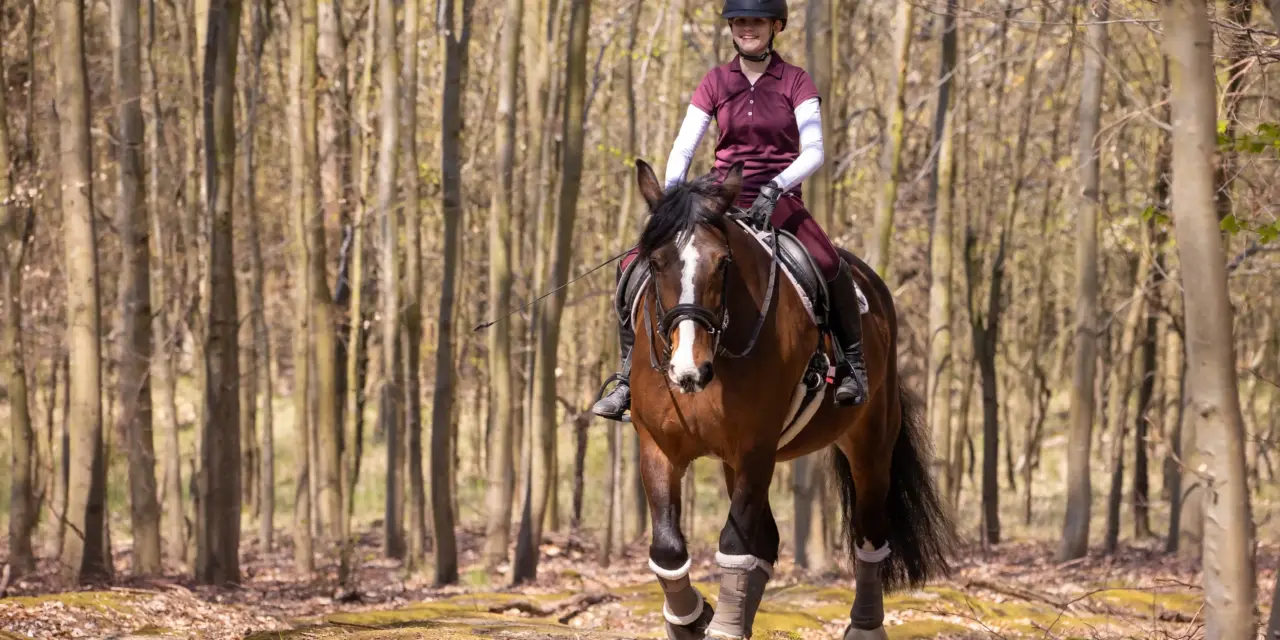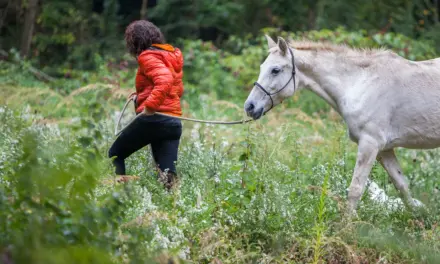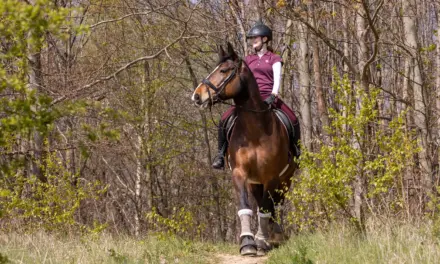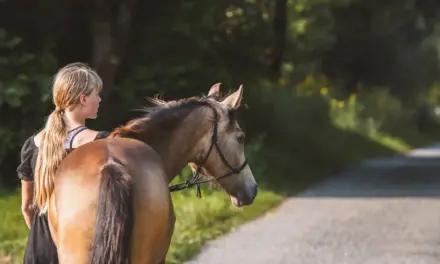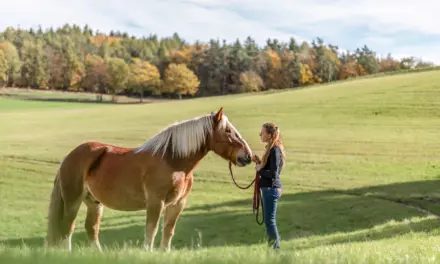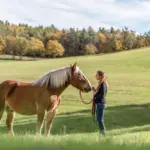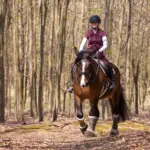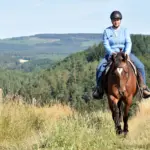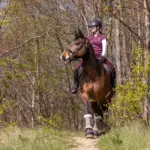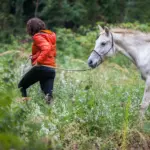How realistic assessment turns challenges into valuable experiences
Key Points at a Glance
- Hacking out offers unique opportunities for physical and mental development, but also comes with specific risks
- Variety, connection with nature, and low-impact exercise are balanced against potential dangers such as wildlife, challenging terrain, and traffic
- Legal aspects such as liability insurance and bridleway regulations require prior research and proper cover
- A responsible approach to rider, horse, and environment is essential for sustainable hacking
- A clear checklist helps decide whether it’s safe to head out or better to stay home
- Good preparation and realistic judgement turn potential risks into rewarding experiences
- Success in hacking comes from making the most of the benefits while staying mindful of the risks
Where opportunity meets challenge
Working with horses in open terrain is never black or white – it’s a place where opportunity meets challenge, making it both rewarding and demanding in equal measure. The key is to view both sides realistically and strike a healthy balance between them.
Many riders tend to take extreme positions: some avoid hacking altogether, seeing it as too dangerous and preferring to stay safely within the white boards, while others underestimate the risks and find themselves in unsafe situations. Neither approach does justice to the complexity of working a horse outdoors. The reality lies somewhere in between: riding out offers invaluable benefits for both horse and rider, but it also demands heightened awareness, solid preparation, and realistic risk assessment. Finding this balance is an art – one that develops through experience and a conscious engagement with both opportunity and challenge.
Those who recognise this dual nature and act accordingly can make the most of what hacking has to offer without exposing themselves or their horses to unnecessary risks. The goal isn’t to eliminate every possible danger – that would be unrealistic – but to minimise the risks intelligently while maximising the benefits.
Making the most of the many benefits – with a systematic approach
The benefits of working your horse outdoors are as varied as they are enriching – and they more than justify the extra effort involved in preparation. Variety is the key: while schooling in an arena can quickly become repetitive, hacking out offers a steady stream of new challenges and experiences. The immersive experience of being out in nature has a powerful effect on the well-being of both horse and rider. Fresh air, ever-changing scenery and the natural sounds of the environment create a sense of calm and presence that simply can’t be replicated in an indoor setting. This change of scenery can work wonders for motivation – not just for the horse, but also for the rider after a long and tiring day at work.
From a biomechanical perspective, riding out offers invaluable benefits. Uneven ground, natural inclines and varied terrain provide a more joint-friendly and well-rounded form of exercise. Muscles are trained in a more functional way than on flat arena surfaces, and proprioception develops optimally thanks to the constant adjustments the horse has to make. Mental recovery is another key aspect. Horses that regularly spend time outdoors often display a more balanced temperament and improved willingness to work. The stress relief provided by the natural environment helps offset the demands of structured training and contributes to the horse’s overall mental wellbeing.
Recognising risks without overreacting
Acknowledging the risks of riding out doesn’t mean blowing them out of proportion – it simply means staying aware and acting accordingly. Wildlife is one of the most underestimated hazards. Deer suddenly leaping from the undergrowth, foxes with their young, or aggressive dogs can all trigger unpredictable reactions in horses.
Difficult ground conditions present another challenge. Slippery paths after rain, hidden holes or unstable footing can lead to falls. Assessing how well different types of terrain will hold up takes experience – and can vary greatly depending on the weather and time of year.
Traffic remains one of the biggest risks when riding out. Even on quiet lanes, vehicles can appear unexpectedly – and not all drivers or cyclists show consideration for riders. Good road safety training, along with desensitisation work for both horse and rider, can significantly reduce the risk.
Allergens found in nature can affect both horse and rider. Pollen, certain plants or insect stings may trigger allergic reactions. Extra care should be taken with sensitive horses, and appropriate precautions put in place.
Legal responsibility and staying within the law
The legal aspects of riding out are essential for every rider in the UK.
A valid third-party liability insurance policy is the bare minimum – it should cover not only damage to others, but also situations specific to hacking and cross-country riding.
It’s also important to check the small print: some policies exclude things like riding bitless or bareback, which could leave you unprotected in the event of an accident.
For added peace of mind, taking out personal accident insurance is strongly recommended – just in case.
Access rules for riders vary greatly from country to country – and in some places, even from region to region. In the UK, the situation is clearer: bridleways are legally designated and always marked, and detailed Ordnance Survey maps showing rights of way can be purchased online. Still, it’s every rider’s responsibility to check local access rights before heading out, especially when riding in unfamiliar areas or across private land. Doing so isn’t just a legal requirement – it’s also a sign of respect towards other countryside users. While in some countries or regions, it’s common for riders, walkers and cyclists to share the same tracks, other areas enforce strict rules on where horses are permitted.
Access rights can also change with the seasons. Some areas – including certain beaches – may restrict horse riding during the summer months, allowing access only in autumn and winter. Seasonal restrictions may also apply during nesting periods, game seasons, or in protected conservation areas, where temporary closures help safeguard wildlife. These rules are in place for the benefit of nature and should always be respected by responsible riders.
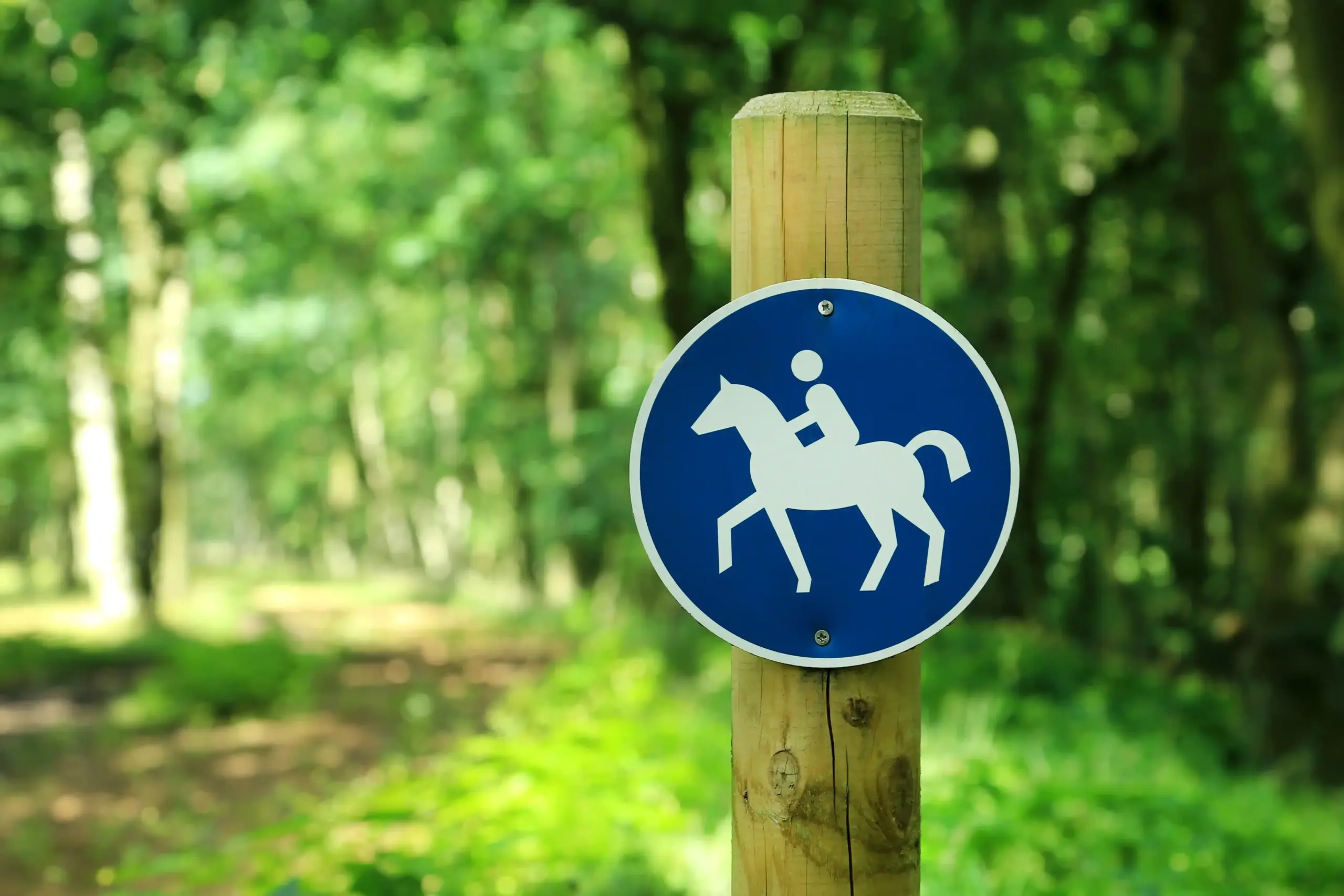
Responsibility for everyone involved
Responsible hacking means keeping the needs and safety of everyone involved in mind. Showing consideration for other countryside users – such as walkers, runners or cyclists – should go without saying. A friendly greeting, a sensible pace, and giving way when appropriate all help create a positive atmosphere. Even someone who isn’t afraid of horses doesn’t want to be splattered with mud by a galloping group or left coughing in a cloud of dust. Horses are large, powerful animals – and to many people unfamiliar with them, they can be intimidating. That’s why riders should always behave calmly and courteously. When in doubt, slow to a walk, give others plenty of space, or even dismount and lead your horse past if someone appears unsure or frightened.
Responsibility for one’s own horse goes beyond immediate safety – it also includes long-term health and wellbeing. Avoiding overexertion, paying attention to warning signs, and adapting training to the horse’s individual needs are key aspects of responsible horsemanship. Not seeing your horse for three weeks, only to take it on a four-hour fast-paced hack, is asking for trouble health-wise. If you enjoy going on long rides, you need to keep your horse fit enough to cope comfortably and without risk.
Environmental protection should always be a consideration when riding out. Avoiding damage to vegetation, taking litter home, and steering clear of sensitive areas all help ensure that bridleways and tracks remain accessible in the future. Every rider is an ambassador for the sport.
The role model function of experienced riders – especially towards beginners – should not be underestimated. Responsible behaviour sets an example and contributes to the positive development of the entire riding community. By contrast, negative experiences caused by inconsiderate behaviour from a few can have lasting consequences for everyone. In the past, irresponsible riding has even led to the closure of bridleways – a loss that affects the whole community.
The day-to-day risk assessment
A well-thought-out checklist for daily risk assessment can help you make the right call between “go” and “no-go”. Weather is often the first factor to consider: strong winds, thunderstorms or extreme temperatures can significantly increase risk and should be reason enough to postpone a ride out. Horses aren’t made of sugar – a light summer shower won’t bother them. But storms or lightning, falling branches or trees, and open spaces during a thunderstorm present avoidable dangers that simply aren’t worth the risk.
The health and condition of both horse and rider is another critical factor. A lame horse has no place out on a hack, and the rider should also be physically fit and mentally alert. Fatigue, stress, or underlying health issues can significantly increase the risk of accidents. Mental form on the day matters just as much: a nervous, distracted horse or a stressed, unfocused rider should not be heading out. An honest self-assessment can help prevent dangerous situations before they arise.
External factors such as construction works, events, or unusually heavy traffic due to a diversion can also be valid reasons to change your planned route or postpone your ride. Being flexible – and willing to say “no” when necessary – is a sign of responsibility, not weakness.
What once seemed risky becomes enriching – with the right preparation
The art of successful hacking lies in finding the right balance between opportunity and risk. Neither blind risk-taking nor excessive caution will get you far. Instead, a realistic assessment of both sides provides the foundation for rewarding and enriching experiences.
The opportunities offered by riding out are too valuable to miss out on through fear of the risks. At the same time, those risks are too real to ignore. It is the ability to navigate thoughtfully between the two that defines a responsible and capable rider – and opens the door to a deeper, more rewarding riding experience.

